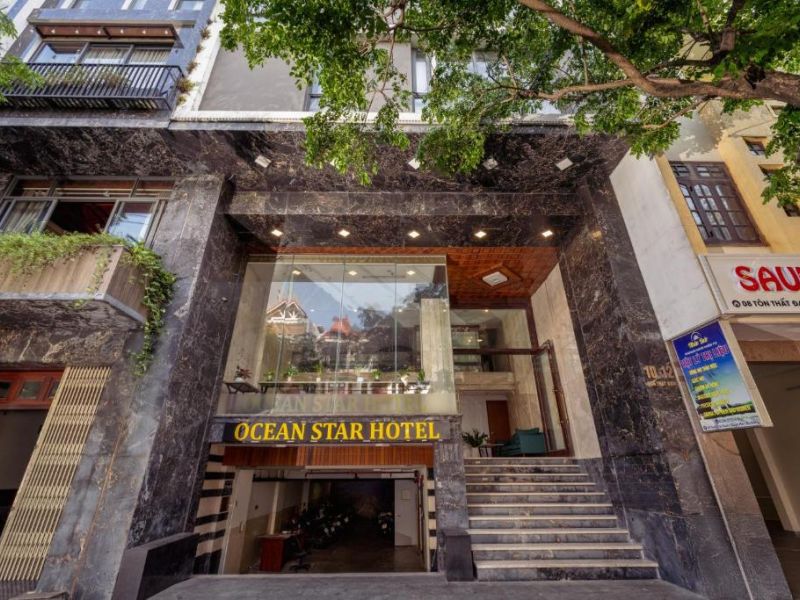Jambalaya: A Flavorful Dive into Louisiana’s Culinary Treasure with The Monroe Hotels
Jambalaya is one of those iconic dishes that not only represents the heart of Louisiana’s cuisine but also captures the essence of Southern cooking in the United States. Whether you’ve already tasted this spicy, savory dish or it’s still on your food bucket list, Jambalaya is more than just a meal—it’s a tradition. Today, together with The Monroe Hotels, we are diving deep into the origins, evolution, and varieties of this unforgettable dish that has left an indelible mark on the culinary world. So, buckle up and get ready for a flavorful journey.
What is Jambalaya?
Jambalaya, often referred to as the heart and soul of Creole cuisine, is a one-pot rice dish that blends a variety of ingredients into a symphony of flavors. Its foundation lies in rice, often accompanied by a blend of vegetables, meats, and spices that make this dish as versatile as it is delicious. Originating from Louisiana, it reflects a mix of African, French, Spanish, and Native American culinary influences—making it a true melting pot of flavors.
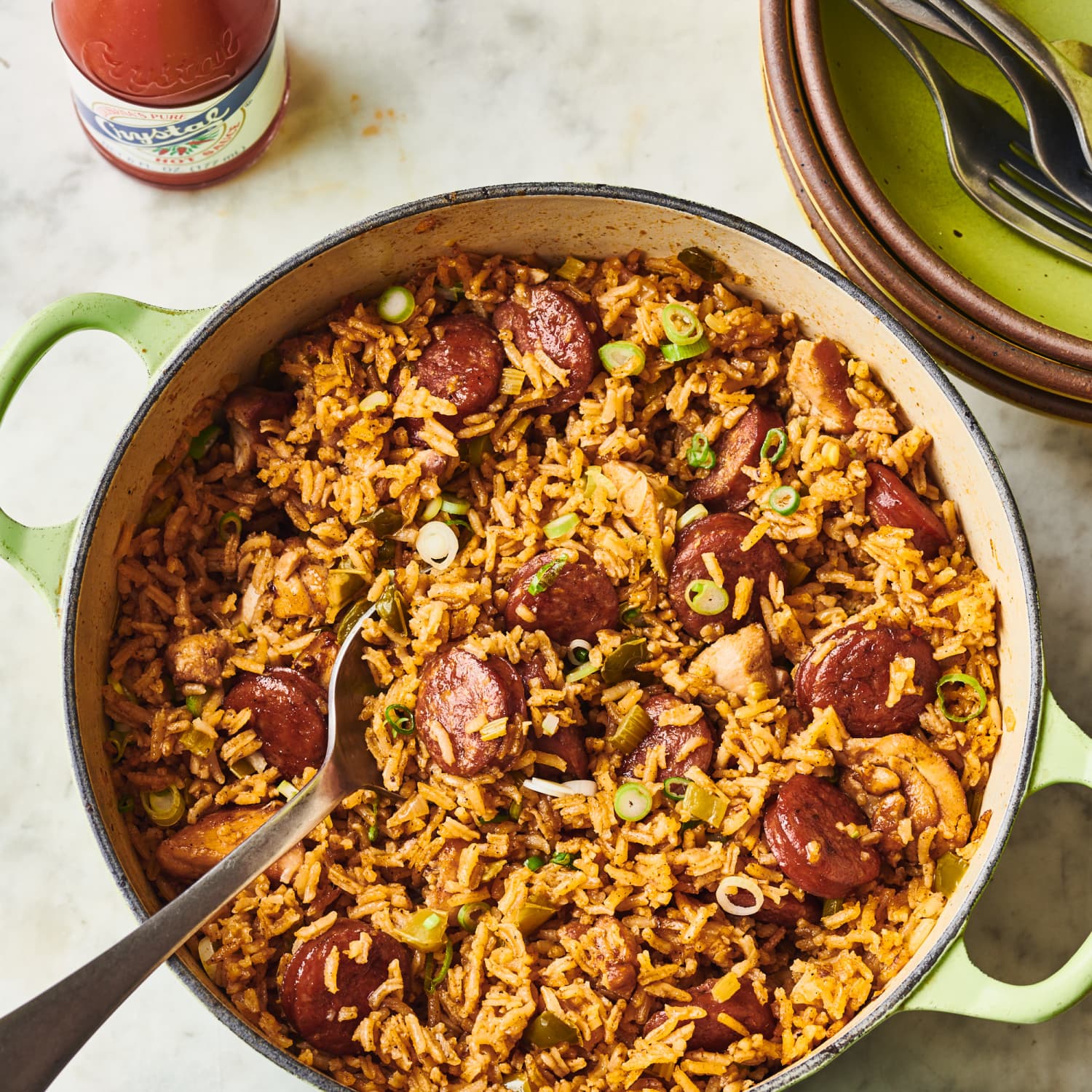
At its core, Jambalaya consists of rice, protein (usually chicken, sausage, shrimp, or a mix), and vegetables such as bell peppers, onions, and celery—collectively known as the “Holy Trinity” of Creole cooking. The magic happens when all these ingredients are cooked together in a single pot, allowing the rice to absorb all the rich, aromatic flavors from the other ingredients.
The Origins of Jambalaya: A Culinary History
To fully appreciate Jambalaya, we must explore its fascinating history. This dish has roots deep within the cultural melting pot of Louisiana, where French settlers, African slaves, and Spanish colonizers brought their unique culinary traditions. The dish’s origins can be traced to a blend of the Spanish paella and the French dish of jambon (ham), both of which inspired this hearty, rice-based creation.

The Spanish influence is evident in the use of saffron and other spices, while the French contribution is seen in the technique of slow cooking everything together. African slaves added their influence through the use of smoked meats, and later, Creole chefs perfected the dish with the addition of tomatoes and a variety of spices. Today, Jambalaya is a beloved dish that embodies the diverse cultural influences that have shaped Louisiana’s food scene.
Jambalaya Varieties: Exploring the Different Types
Jambalaya comes in a variety of styles, each unique to the region and preferences of the chef. The two main types of Jambalaya are Creole (also known as “tomato-based”) and Cajun (also referred to as “brown” Jambalaya).
Creole Jambalaya (Tomato-Based)
Creole Jambalaya, also known as “red Jambalaya,” is distinguished by its use of tomatoes. The tomatoes give the dish a rich, vibrant color and a slightly tangy flavor that balances the spiciness of the dish. This version typically includes shrimp, crab, and sausage, though it can feature any combination of proteins. The use of tomatoes adds an extra layer of flavor and depth to the dish, making it a favorite among many.
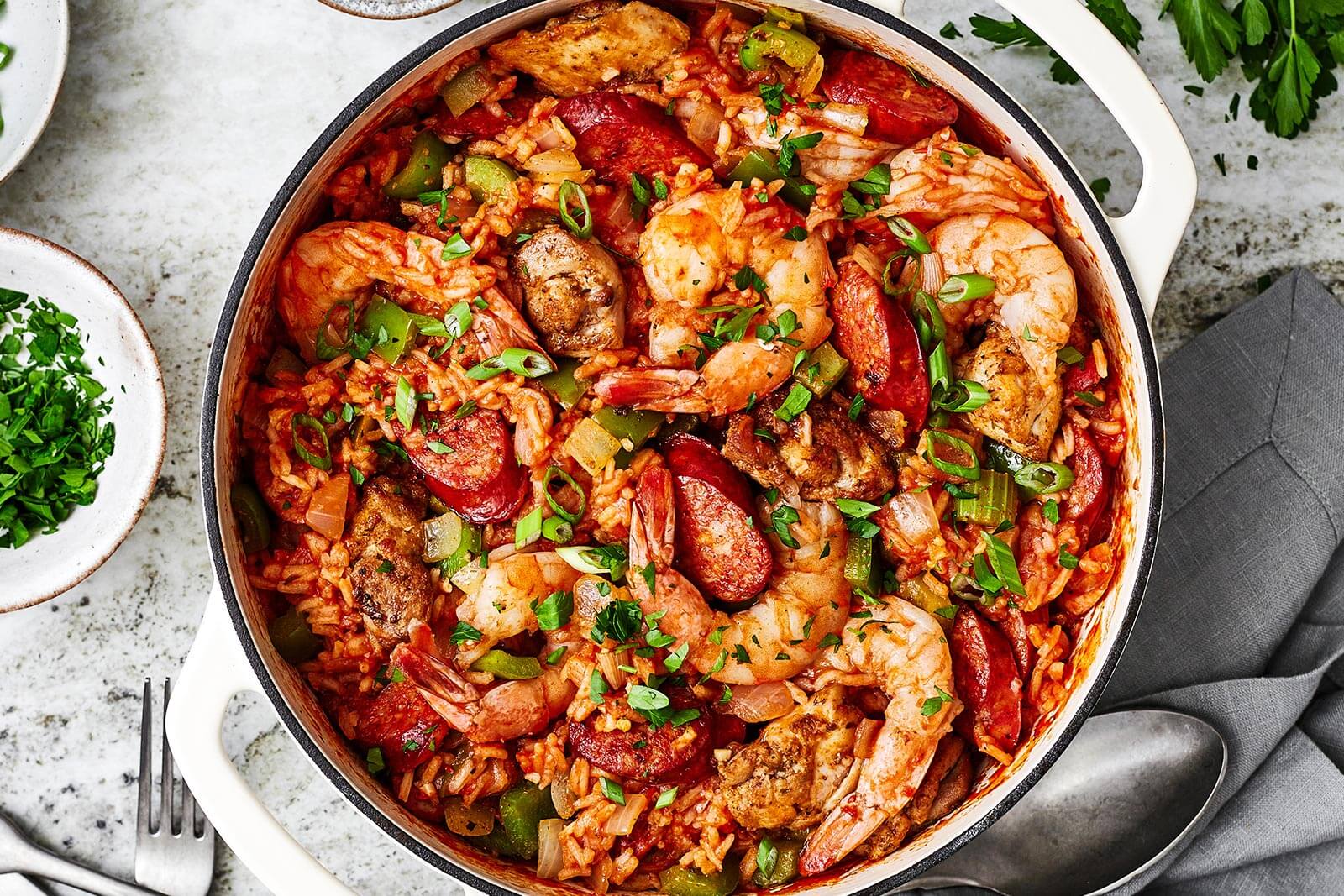
Cajun Jambalaya (Brown Jambalaya)
Cajun Jambalaya, on the other hand, is often referred to as “brown Jambalaya” due to the rich, dark color that develops as the ingredients cook together. This version is often made with chicken, sausage, or pork, and sometimes beef. The key to achieving the perfect brown Jambalaya is in the browning of the meat and the caramelization of the vegetables. Unlike Creole Jambalaya, Cajun versions typically skip the tomatoes, relying on the natural flavors from the meat, vegetables, and spices to create a deep, smoky flavor.
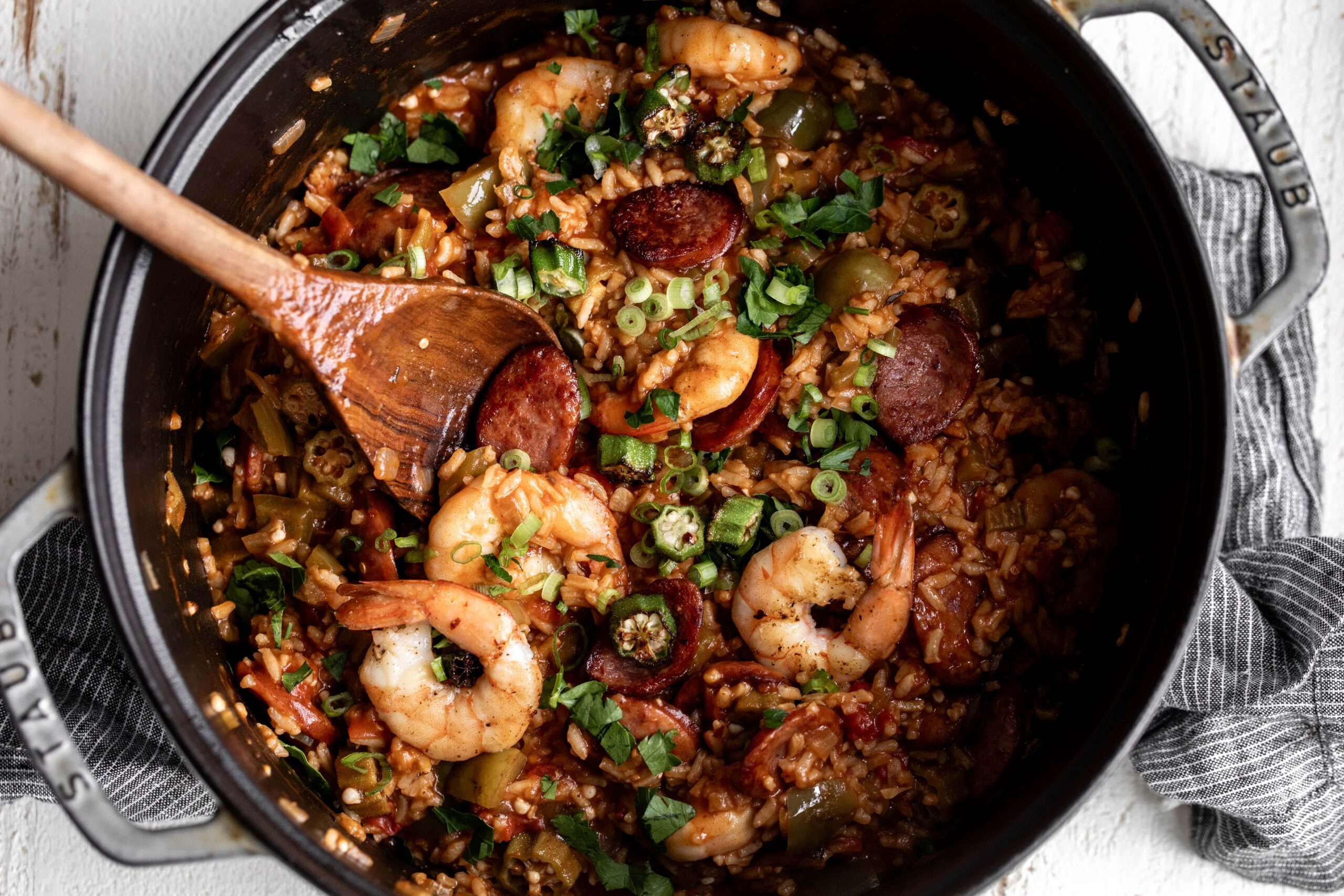
Key Ingredients of Jambalaya: The Essential Components
Every great Jambalaya starts with quality ingredients. Here’s a breakdown of the key components that go into this mouthwatering dish:
Rice
Rice is the backbone of any Jambalaya recipe. Long-grain white rice is typically used because it remains fluffy and doesn’t become mushy during cooking. The rice absorbs all the flavorful liquid, creating a savory, satisfying dish.
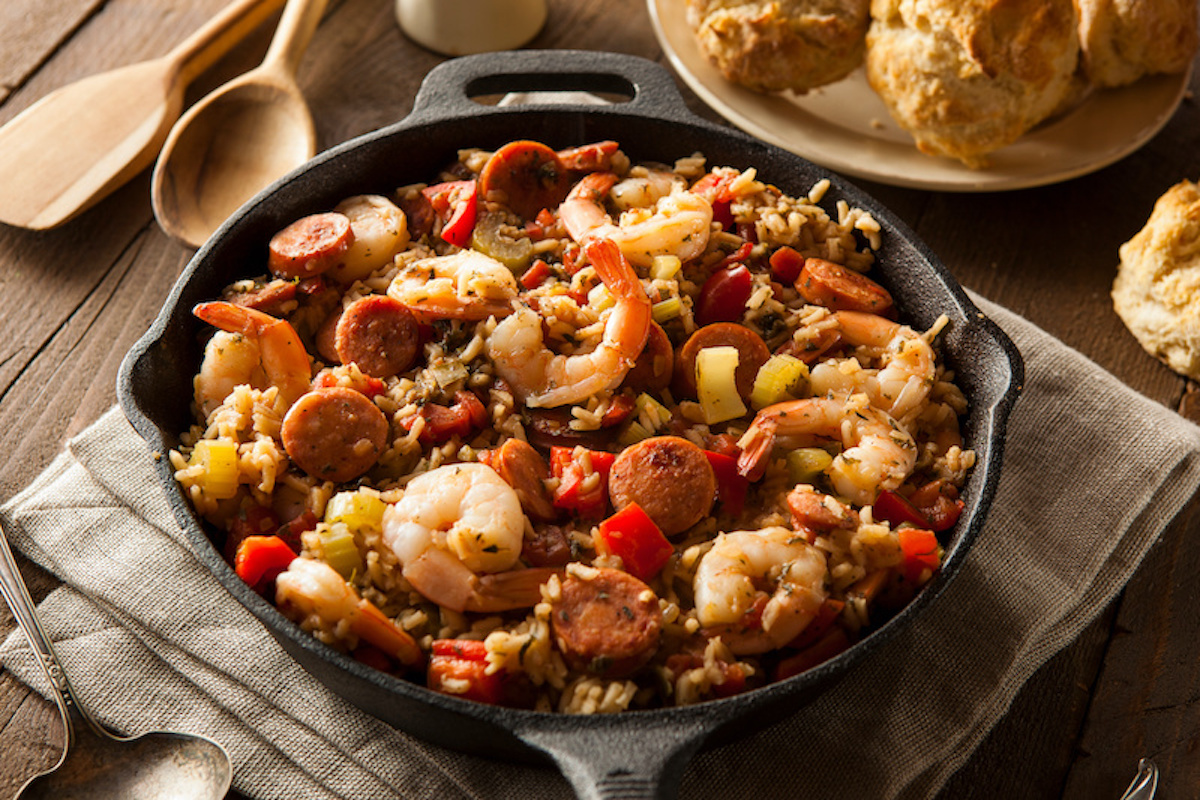
Vegetables
The Holy Trinity of Cajun and Creole cooking consists of onions, bell peppers, and celery. These vegetables are sautéed in oil or butter to create a flavorful base for the dish. Sometimes, garlic and tomatoes are added for extra depth of flavor.
Proteins
The protein used in Jambalaya can vary widely, and it’s one of the reasons this dish is so versatile. Popular proteins include:
-
Chicken: Often paired with sausage for a hearty, filling meal.
-
Sausage: Smoked sausage, andouille sausage, or chorizo are common choices.
-
Seafood: Shrimp, crab, and even crawfish are frequently added, especially in Creole versions.
-
Pork: Pork can be used in place of or alongside chicken and sausage, providing a different texture and flavor profile.
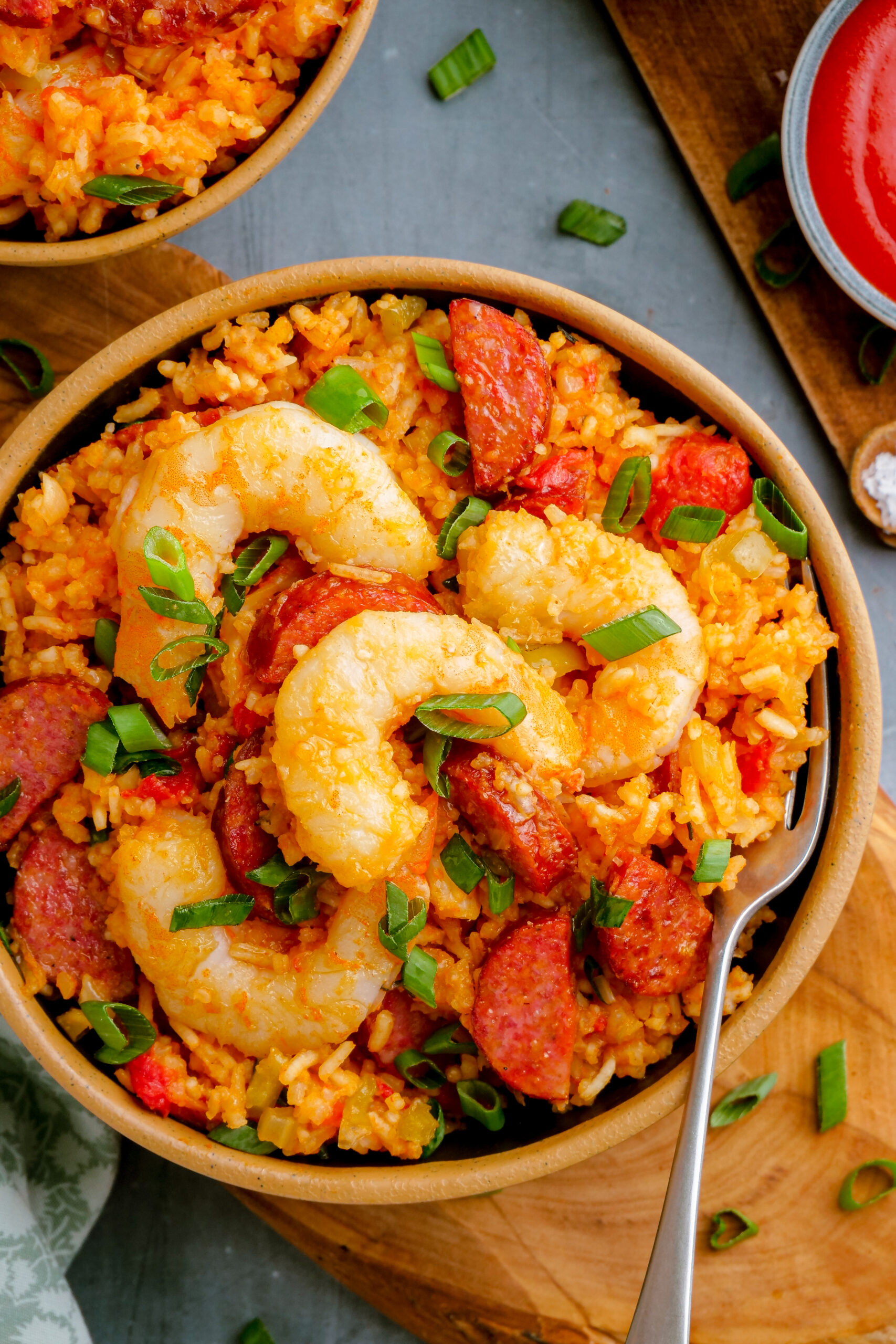
Spices and Seasonings
Seasonings are what truly make Jambalaya come alive. Cajun and Creole seasoning blends are the go-to choices for most recipes, though some chefs might add a touch of hot sauce or smoked paprika for extra heat. The seasoning blends typically include:
-
Paprika
-
Cayenne pepper
-
Thyme
-
Bay leaves
-
Black pepper
-
Salt
These spices give Jambalaya its signature bold flavor, making it a standout dish.
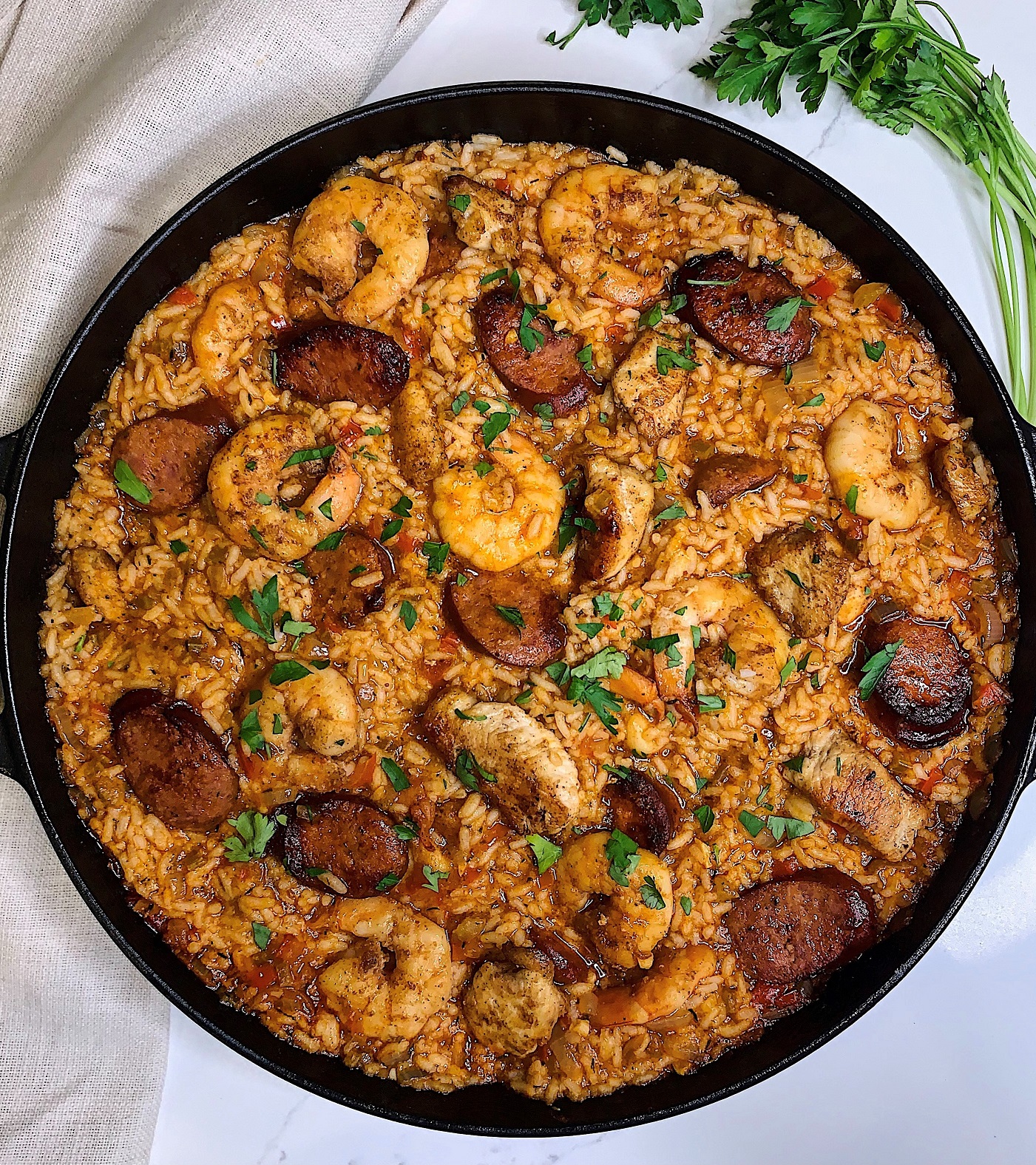
The Cooking Process: How Jambalaya Comes Together
Making Jambalaya is a relatively straightforward process, though it requires patience to allow all the flavors to meld together perfectly. Here’s a basic outline of how to prepare this classic dish:
-
Sauté the Vegetables: Start by sautéing the onions, bell peppers, and celery in a large pot or Dutch oven. This step forms the flavor base for the dish.
-
Brown the Meat: If you’re using sausage, chicken, or pork, brown it in the same pot to develop flavor.
-
Add the Rice: Stir in the rice to coat it with the oils and seasonings.
-
Simmer the Dish: Add the stock, tomatoes (for Creole Jambalaya), and seasonings. Bring everything to a boil, then reduce to a simmer. Let it cook until the rice absorbs the liquid and is fully cooked.
-
Serve and Enjoy: Once the rice is cooked, it’s time to serve your Jambalaya. Garnish with fresh herbs and a squeeze of lemon if desired.
Why Jambalaya Is the Ultimate Comfort Food
Jambalaya is the perfect comfort food for many reasons. First, it’s incredibly filling. The combination of rice, protein, and vegetables makes it a hearty meal that can stand on its own. Secondly, it’s a dish that brings people together. Whether you’re cooking for a family dinner or serving it at a party, Jambalaya has a way of bringing a crowd together with its irresistible aroma and vibrant flavors.
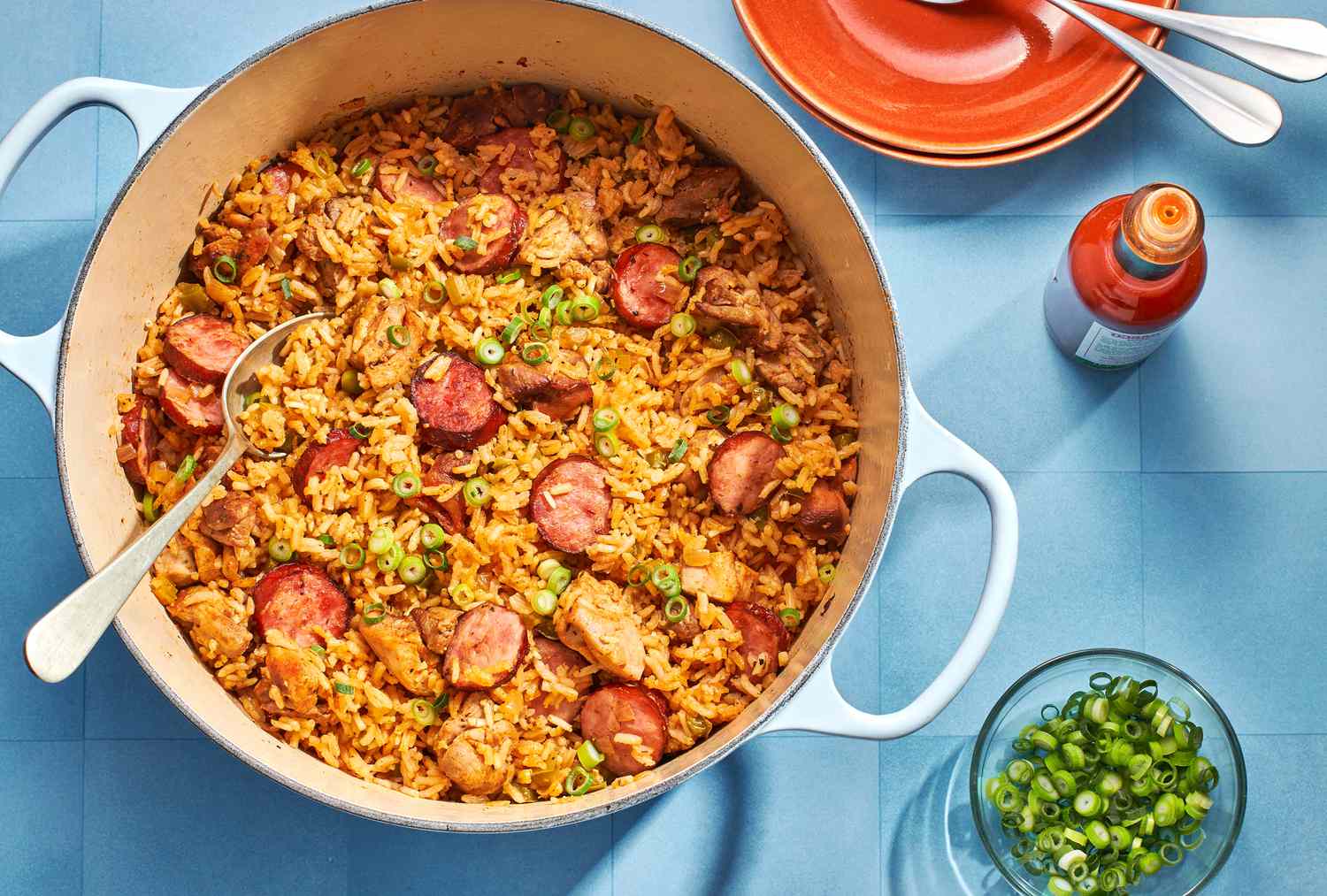
Additionally, Jambalaya is easy to make in large batches, which is why it’s often served at gatherings like weddings, festivals, and Mardi Gras celebrations. It’s a dish that embodies the spirit of Louisiana: bold, flavorful, and communal.
Jambalaya Around the World: Global Influences
While Jambalaya has its roots firmly planted in Louisiana, its influence can be seen in many parts of the world. Similar dishes can be found in countries such as Spain (paella), Cuba (arroz con pollo), and even the Caribbean. The concept of a rice-based dish with a blend of meats, seafood, and vegetables is universal, and many cultures have put their own spin on it.
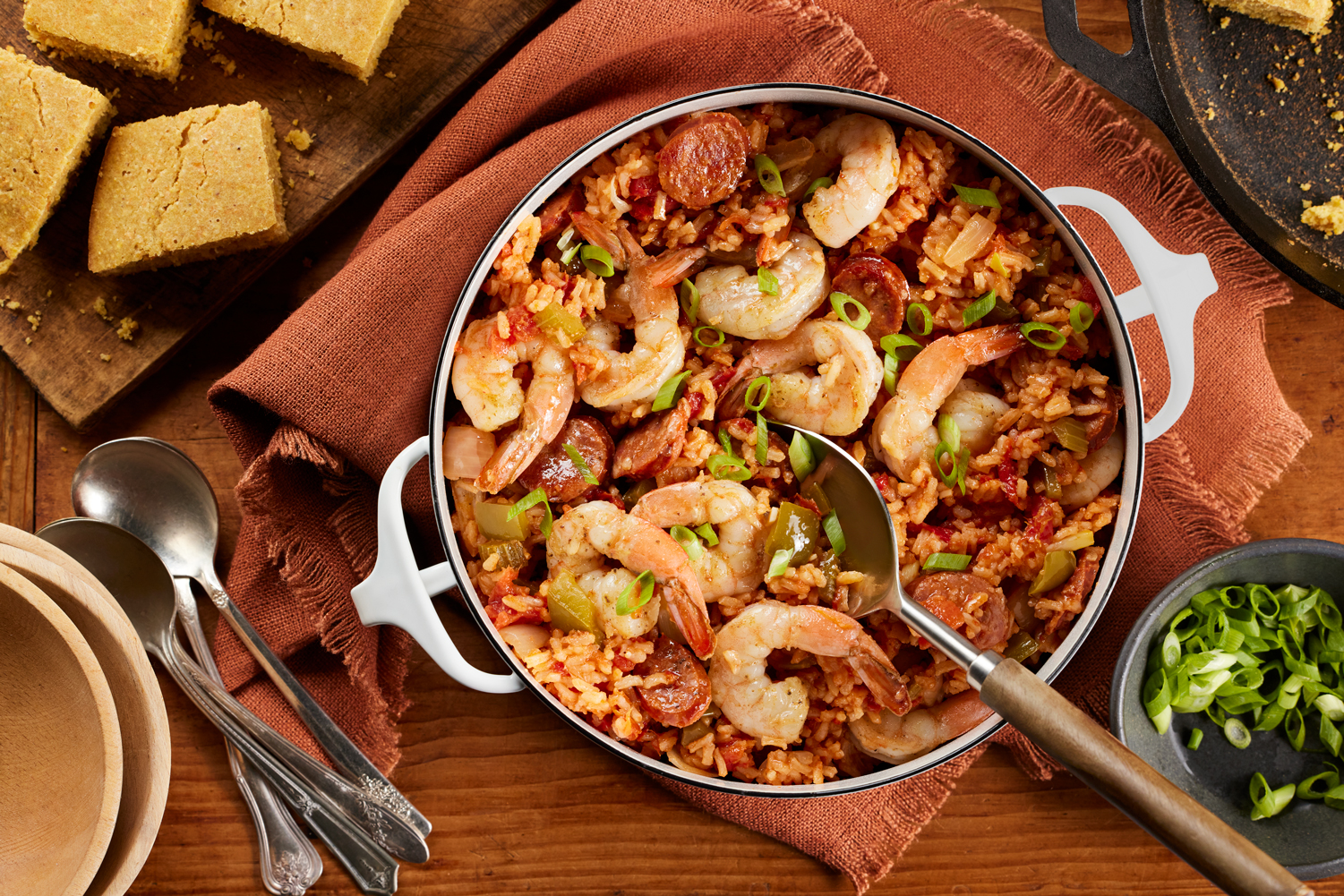
For example, in Spain, paella is a beloved dish with similar ingredients but a distinct cooking technique. In Cuba, arroz con pollo is often made with chicken and vegetables, reflecting the island’s Spanish and African influences. In the Caribbean, dishes like pelau combine rice, meat, and spices in a way that mirrors Jambalaya’s approach.
Why You Should Try Jambalaya at The Monroe Hotels
If you’re craving authentic Jambalaya, there’s no better place to enjoy it than at The Monroe Hotels. Known for our commitment to serving up the finest local cuisine, we offer a variety of delicious Jambalaya dishes that stay true to the flavors of Louisiana. Whether you’re in the mood for the classic Creole version with shrimp and crab or prefer the smoky flavors of Cajun Jambalaya, we have something for everyone.
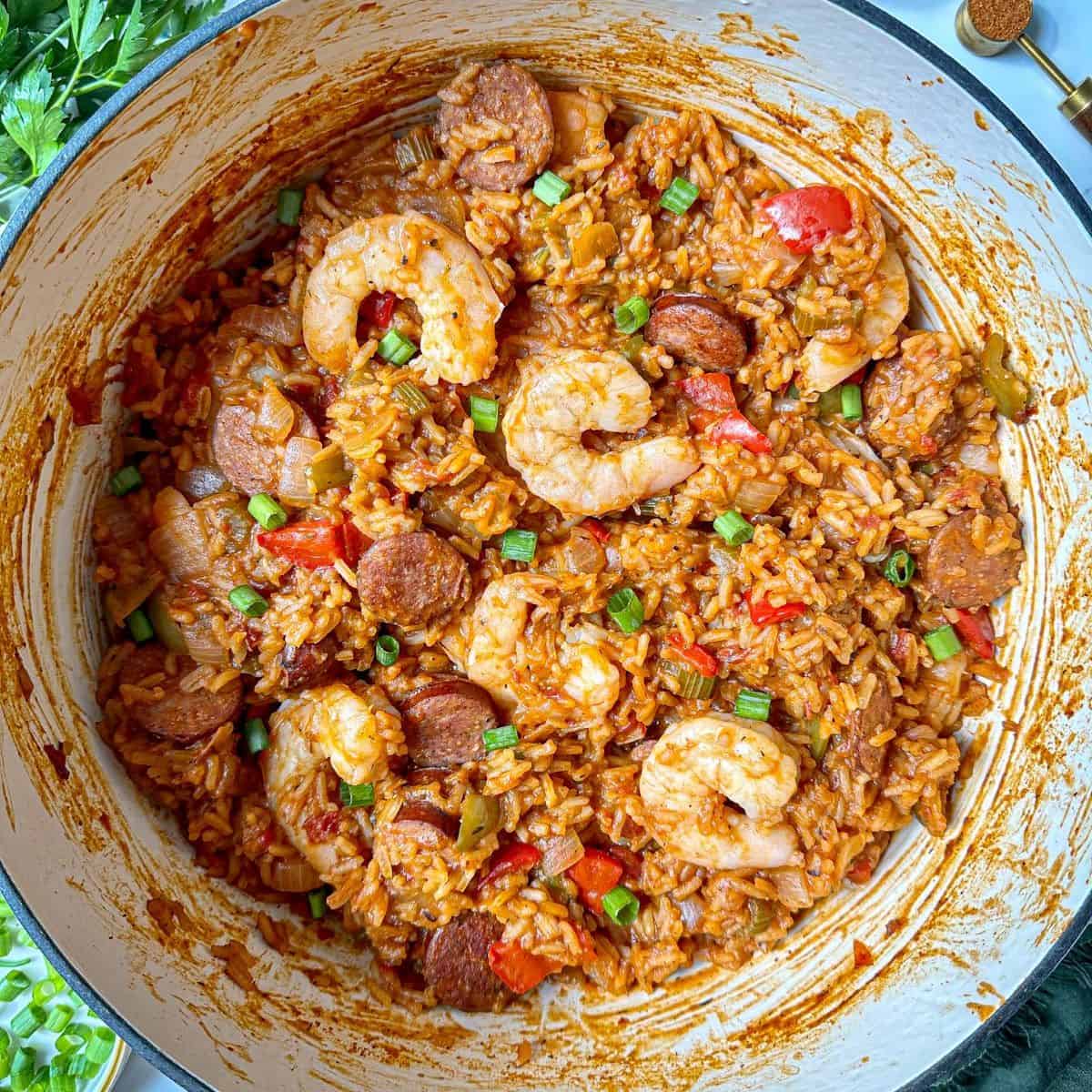
At The Monroe Hotels, we pride ourselves on using the freshest ingredients and following traditional recipes to bring you an unforgettable dining experience. Our Jambalaya is the perfect way to experience the soul of Louisiana right at your table.
Final Thoughts on Jambalaya
Jambalaya is more than just a dish—it’s a story, a celebration, and a cultural treasure that has stood the test of time. Whether you’re enjoying it for the first time or you’ve been a lifelong fan, it’s clear that Jambalaya is a dish worth savoring. From its humble beginnings to its place in the hearts of food lovers around the world, this dish has earned its place as a true American classic.
With The Monroe Hotels, you can experience the authentic flavors of Louisiana’s most iconic dish. So, next time you’re craving something flavorful and filling, don’t hesitate to dive into a bowl of Jambalaya. It’s a culinary journey you won’t regret.
Details
Namistay chain hotel
- 61-63 Hoang Ke Viem, Bac My Phu, Ngu Hanh Son, Da Nang, Vietnam
- Hotline: 0905 432 992
- Lot 45 An Thuong 29, Bac My Phu, Ngu Hanh Son, Da Nang, Vietnam
- Hotline: 0977 455 546
- 42 An Thuong 26 Street, Bac My Phu, Ngu Hanh Son, Da Nang, Vietnam
- Hotline: 0965 442 842







